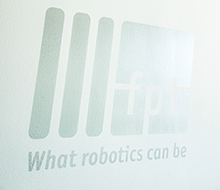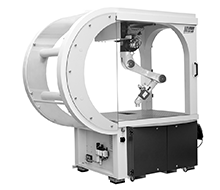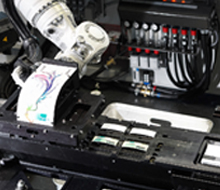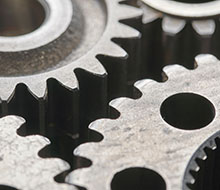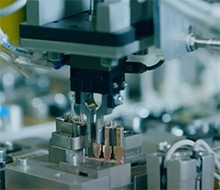The challenge: The semi-automated, space-saving assembly of a three-part filter system that meets the high requirements for quality and process stability in the manufacture of air purification devices
The solution: A highly flexible overall concept consisting of an A-cell with integrated articulated arm robot, graphics-based robot programming, hot melt station, ultrasonic unit and a human-machine interface
Each filter system consists of three components: Frame, filter and cover. In the first step, the operator clamps the frame into one of two workpiece carriers on the rotary table. The turntable cycles. The robot grips the workpiece carrier and moves to the hot melt station. The glue is applied using the robot's degrees of freedom and the gluing unit remains rigid. Only the amount of glue applied is varied relative to the speed of movement of the component. The robot then places the component together with the workpiece carrier back on the turntable. At the same time, the operator fits the filter and the cover onto the already glued frame of the second workpiece carrier. As soon as the robot is ready and the release is given by foot switch, the rotary table cycles. The robot now handles the second workpiece carrier and moves to the ultrasonic welding unit. Here, the cover is welded to the frame. The robot then places the workpiece carrier with the fully assembled filter system back on the rotary table. While the same process (loading the frame with filter and cover, robot handling, welding process) takes place for the component on the first workpiece carrier, the personnel remove the finished part from the second workpiece carrier. The filter system is now installed in the “Atem X” air cleaner.
“New products or product variants can be set up quickly and easily, which would not be possible with conventional robot programming. We were able to add a double or activated carbon filter to the component ourselves.” Peter Reimer, Managing Director / CEO IQAir Germany GmbH
Watch the video
Highlights at a glance
Simple operation and programming
Integration of automation components
Ergonomics and safety at the manual workstation
Low space requirement due to the robot's degrees of freedom
Standardized interfaces for expansion options

 DE
DE EN
EN
















